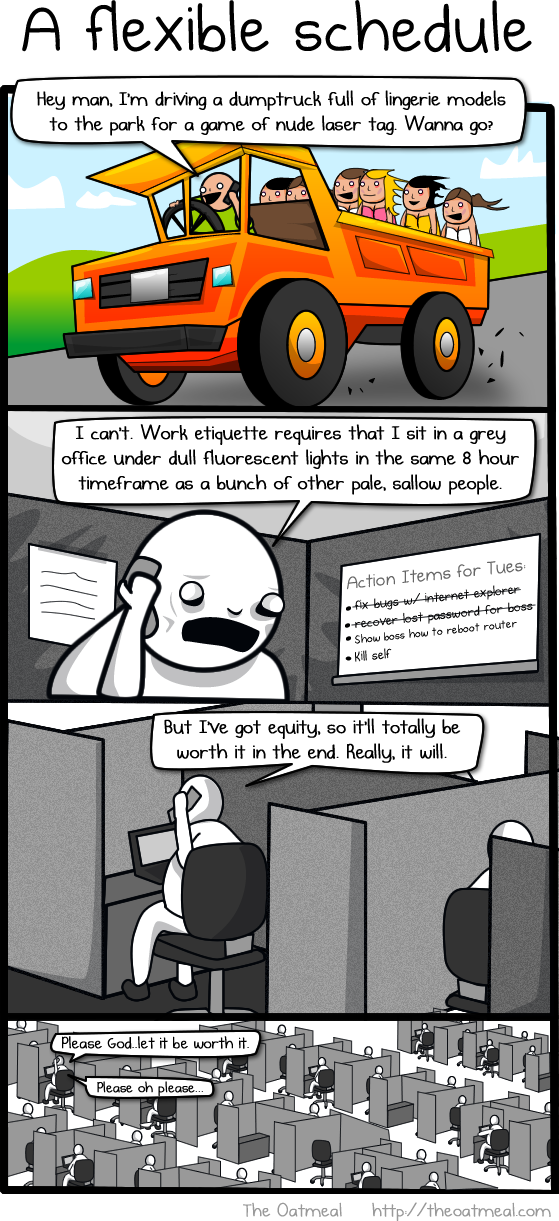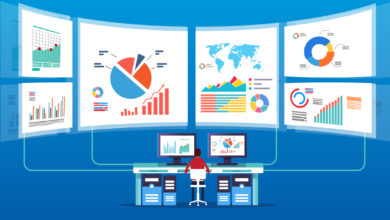[ad_1]
Telecommuting, working remotely, WFH — no matter what you call it, working from home is having its heyday.
In fact, I’m writing this post from a porch in sunny, southern Florida as a breeze gently rolls by.
As I prepared for a week of working remotely, a pressing question came to mind: why is remote work more popular now than its ever been?
As a result, I’ve put together a post that explores what office spaces mean to us, why we’re moving away from them, and how cloud-based collaboration tools make it all possible.
Changing The Corporate Office Stereotype
The average American worker spends approximately 1,790 hours in an office per year.

With so much time spent staring at a computer screen under the warm beam of fluorescent light, it’s no surprise the transformation of the corporate office worker has been chronicled in pop culture.
For example, imagine an office worker in the early 1960’s. A room full of starchily-dressed employees plucking away at their typewriters, smoking an endless chain of cigarettes, may come to mind (thanks to shows like Mad Men). Then, when you think of an office in the early 2000’s, you probably picture the daily cubicle dramas of Dwight, Michael, and Pam from The Office. And when it comes to present-day corporate work, you may picture the airy open-office plan that Silicon Valley workers enjoy (though the success of open-office plans is much debated).
Regardless of where your office is physically located, the working from home (WFH) revolution has gathered momentum in recent years due to the societal perception of office spaces, and the rise of cloud-based tools.
The Rise of the Remote Worker
When most Americans think of the average office worker, they imagine the stereotype of a drab, unenthusiastic person confined to the limits of a cubicle. Of course this isn’t really true, but the dramatized idea has made the corporate environment seem undesirable (as illustrated in The Oatmeal comic below).

Additionally, many recent studies have supported this idea to show that working in an office may not be as effective as we think.
Jason Fried, co-founder of the company 37signals (maker of Basecamp and other collaboration tools), is an expert on remote teamwork and contemporary work culture.
Fried’s TedTalk, “Why Work Doesn’t Happen at Work” explains the most common distractions in modern offices. In one of many enlightening points of this presentation, Fried talks about where most workers prefer to do work. Fried says “when you ask people where they go when they really need to get something done, you’ll rarely hear them say it’s the office…They’ll say their house, their back porch, an extra bedroom they’ve converted into a home office, a library, the coffee shop down the street, the basement.”
Thousands of studies have been conducted to support Fried’s idea that working in an office may be counter-productive. Meanwhile, from reducing employee turnover, to driving employee efficiency, to meeting the demands of millennial needs and expectations, the benefits of working remotely seem to be infinite. And thanks to the dramatic rise of tools built specifically in the cloud, more and more companies are opting for coffee shops and living rooms instead of cubes.
Cloud-Based Collaboration for Every Task
From telecommuting salespeople to freelance logo designers, tools and apps exist for nearly every single job function.

Whether you’re using communication tools like Slack and GoToMeeting, lead management tools like Salesforce and HubSpot, or project management tools like Trello, Proofhub, and Asana, cloud-based tools have become ubiquitous in the enterprise ecosystem.
In addition to making every aspect of remote work easier and more efficient, perhaps the best part about these cloud-based tools is that they integrate seamlessly with one another. At Brandfolder, we know that the need for digital asset management fits within a greater scope of daily duties, like sharing files, publishing blog posts, and managing sales leads. That’s why we’ve built a SaaS platform that integrates with tools like Slack, Salesforce, and WordPress — and its why we’re dedicated to continuing this integration story each day.
Tools in the cloud are also much more flexible, and can easily be scaled up or down to meet a customer’s specific needs. For example, Brandfolder customers can specify their subscription based on details like number of users or amount of storage space desired, among others.
Today’s cloud storage solutions meet the exact needs and desires of organizations, without the need to buy any extra features they don’t need. As a result, cloud storage solutions are much more affordable than traditional software.
Is Remote Work For Everyone?

With many people in agreement about the benefits of working remotely, the physical office is becoming more obsolete. And while cloud-based collaboration tools make working from home possible, it may not be right for everyone.
Although studies have proven remote workers to be more productive and efficient, individuals must sustain a certain sense of work ethic and self discipline, to do it correctly.
No matter where you work — a coffee shop, a high-speed train, or a distant tropical island — there’s no doubt that cloud-based collaboration tools will be absolutely essential to your process.
Source link






